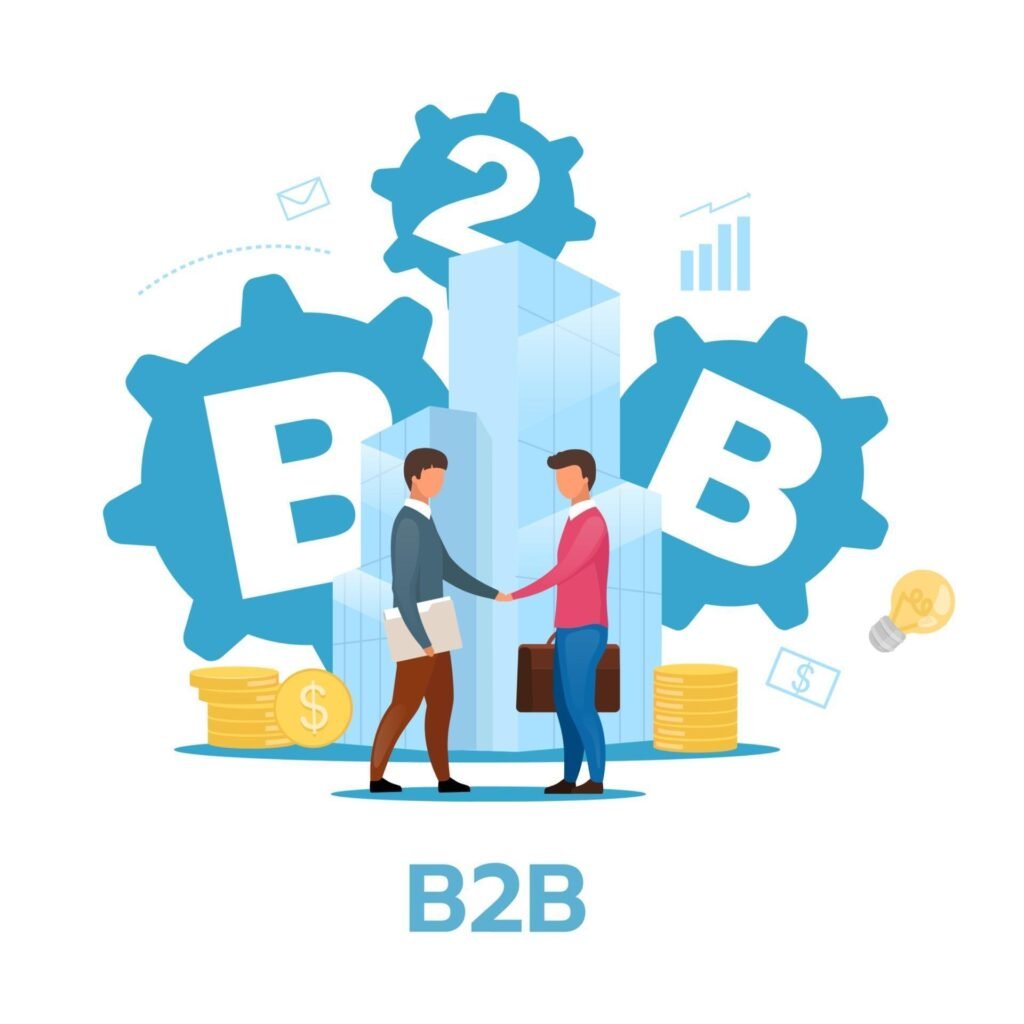Social media is an essential marketing tool, but managing it with limited resources can feel like a constant challenge. For businesses and brands with small teams or tight budgets, it’s crucial to focus on platforms that deliver the most impact for your time and money. The right social media platform not only helps build your brand but also drives engagement, attracts potential customers, and contributes to sustainable growth.
In this article, we’ll explore high-ROI social media platforms for businesses with limited resources, detailing how to prioritize and maximize your presence on each one. By focusing on platforms that fit your audience and goals, you can make meaningful progress without stretching your resources too thin.
The Power of Prioritizing Social Media Platforms
Choosing the right platforms to focus on can make or break your social media strategy. Instead of trying to be everywhere at once, a strategic approach allows you to build strong connections where they count. Every platform has its own strengths, and the key is to align your choice with your target audience, type of content, and business goals.
When evaluating a platform, consider a few factors: your audience’s demographics, the platform’s engagement potential, and its alignment with your content strengths. By narrowing your focus, you give your team more bandwidth to create quality content, engage with followers, and achieve results that drive growth.
1. Instagram: For Visual Storytelling and High Engagement

Why Instagram Delivers High ROI for Visual Brands
Instagram is one of the most engaging social media platforms, especially for visual-driven brands. With over a billion monthly active users, it’s a powerful channel for reaching both younger and middle-aged demographics. Instagram’s focus on images, videos, and Stories makes it ideal for brands that can communicate visually—whether through photos, graphics, or short videos.
The platform’s features allow brands to showcase products, share behind-the-scenes content, and build emotional connections with followers. Instagram Stories, Reels, and IGTV offer opportunities to share different types of content, keeping followers engaged and invested in your brand. For small businesses, Instagram also has a strong focus on supporting commerce with tools like shoppable posts and product tags.
How to Maximize ROI on Instagram with Limited Resources
To make the most of Instagram with a limited budget, focus on consistency and authenticity. Develop a cohesive look and feel for your brand’s profile, using consistent color schemes, fonts, and style. Plan out your posts using a free content calendar tool like Trello or Google Sheets, and schedule content in advance with tools like Later or Buffer. This helps you maintain a steady posting schedule without spending too much time on daily updates.
Instagram thrives on engagement, so make time to interact with followers by responding to comments and engaging with user-generated content. Encourage followers to tag your brand in their posts, then reshare these on your Stories for added authenticity. User-generated content not only builds trust but also provides you with quality content for free.
Instagram’s Reels feature offers a unique growth opportunity, as Instagram actively promotes Reels to attract more engagement. Experiment with short, engaging videos that highlight your product or share tips relevant to your audience. Since Reels are prioritized in Instagram’s algorithm, they can significantly boost your visibility without needing a big budget.
2. LinkedIn: For B2B Networking and Thought Leadership

Why LinkedIn is Ideal for B2B Brands
LinkedIn is one of the most effective social platforms for B2B companies, making it a top choice if your audience includes professionals, business decision-makers, or industry leaders. LinkedIn has become more than just a networking site; it’s now a powerful platform for content marketing and brand building, particularly for industries like finance, tech, consulting, and SaaS.
LinkedIn’s format encourages thought leadership, making it ideal for sharing industry insights, case studies, and company updates. Posts that provide value, share knowledge, or offer solutions tend to perform well, as LinkedIn users are typically looking for professional content. The platform’s targeting options also allow you to reach specific industries or job titles, helping you connect with potential clients or partners.
Getting the Most Out of LinkedIn on a Budget
For small teams, the best way to approach LinkedIn is to position your brand as a thought leader. Share insights into industry trends, publish posts that answer common client questions, and highlight company achievements or case studies. This positions your brand as an authority and builds trust with your audience.
Utilize LinkedIn’s article publishing feature to share long-form content, such as how-to guides or in-depth analyses relevant to your industry. These articles give you credibility and are indexed by search engines, extending their reach beyond LinkedIn. Encourage employees, especially executives, to share content on their personal LinkedIn profiles to increase visibility and engagement.
Engagement is key on LinkedIn, so make an effort to respond to comments and engage with content from others in your industry. Joining LinkedIn groups related to your field also allows you to connect with a targeted audience and share your expertise, helping drive awareness and leads without paid advertising.
3. Facebook: For Building Community and Organic Reach in Niche Markets

Why Facebook Works for Community Building
Despite changes in Facebook’s algorithm, the platform remains a valuable tool, especially for niche markets and community-driven brands. With more than 2.8 billion monthly active users, Facebook reaches a broad demographic, including older audiences who may not be as active on Instagram or TikTok.
Facebook Groups offer an excellent way for brands to build and engage with communities, providing value and fostering loyalty. For example, brands in wellness, hobbies, or education can create groups where members can ask questions, share tips, and connect with each other. This sense of community keeps your audience engaged and provides a space where they feel connected to your brand.
Tips for Maximizing ROI on Facebook with Limited Resources
Start by creating a Facebook page that represents your brand clearly, with complete and up-to-date information. Use Facebook’s free tools, like Events and Stories, to stay relevant in followers’ feeds. Regularly share content that offers value—whether it’s tips, industry news, or behind-the-scenes looks at your brand.
To build a community, consider starting a Facebook Group where followers can discuss topics related to your brand. For example, if you’re a fitness brand, create a group for people interested in fitness tips or wellness advice. Actively engage in the group by answering questions, sharing insights, and sparking conversations. Groups are an organic way to foster brand loyalty, and Facebook’s algorithm tends to prioritize group posts over regular page updates.
If you want to amplify certain posts without a significant budget, Facebook’s Boost feature allows you to promote high-performing content to a targeted audience for a low cost. Boosting select posts that are already gaining traction can give them an extra push and attract more attention without a hefty ad spend.
4. Twitter: For Real-Time Engagement and Industry Connections

Why Twitter is Ideal for Real-Time Updates and Industry News
Twitter is a fast-paced platform that works well for brands looking to engage in real-time conversations, stay updated on industry trends, and connect with other businesses. It’s particularly effective for tech, news, media, and entertainment brands. Twitter’s real-time nature allows brands to join trending conversations, share timely updates, and respond quickly to followers.
For companies looking to establish a presence in the tech or B2B sectors, Twitter offers a platform to connect with industry leaders, journalists, and potential partners. Twitter hashtags also make it easy to join relevant conversations and increase your content’s visibility among specific audiences.
Making the Most of Twitter with Limited Resources
To succeed on Twitter with a limited budget, focus on sharing valuable and timely content. Stay updated on trending topics in your industry and contribute insights or perspectives to relevant conversations. Sharing news, quick tips, or industry insights helps build your authority and keeps your audience engaged.
Twitter’s short format makes it easy to post frequently without needing extensive resources. Set up a simple content calendar and use scheduling tools like TweetDeck or Hootsuite to plan tweets in advance, ensuring consistent activity on your profile. Regularly retweet or share content from others in your industry to show engagement and build connections.
Engagement is key on Twitter, so respond to mentions, comments, and messages to build relationships with followers. Participating in Twitter Chats, where users discuss specific topics at designated times, can also increase visibility and connect you with an engaged audience interested in your field.
5. TikTok: For Creative Brands Looking to Reach Younger Audiences

Why TikTok Offers High ROI for Creative Content
TikTok has quickly become one of the most popular platforms among Gen Z and Millennials, with its unique format that encourages creativity, trends, and short-form video content. If your brand targets younger demographics or thrives in visual storytelling, TikTok can be an excellent way to reach a broad, engaged audience.
The TikTok algorithm prioritizes content discovery, meaning that any video—regardless of the size of the creator’s following—can go viral if it resonates with viewers. This level playing field offers a high potential for organic reach, making TikTok a cost-effective platform for brands willing to invest in creative, engaging content.
How to Maximize ROI on TikTok Without Big Budgets
To succeed on TikTok, focus on creating authentic, engaging content that fits the platform’s style. Experiment with short, informal videos that highlight your brand’s personality or showcase behind-the-scenes moments. TikTok users value authenticity, so don’t be afraid to show a more casual, playful side of your brand.
Use TikTok’s trending sounds, hashtags, and challenges to increase visibility. Following trends doesn’t mean losing your brand’s identity; instead, find creative ways to participate that align with your brand’s message. For instance, if there’s a trending hashtag about productivity, a brand selling office supplies could create a short, fun video showing how their products boost productivity.
Since TikTok’s content lifespan is shorter, it’s important to post consistently. Repurpose content from other platforms, such as Instagram Reels or Twitter videos, to save time and effort. Engage with followers by responding to comments and encouraging user-generated content, which can enhance your reach without needing additional resources.

Related: Check out our free SEO suite

6. YouTube: For Brands Focused on Education and Tutorials

Why YouTube is Great for Evergreen Content and Education
YouTube remains one of the most powerful platforms for video content, particularly for brands focused on educational content, tutorials, and how-to guides. Since YouTube is also a search engine, well-optimized videos can continue to attract viewers for years, making it an excellent choice for brands looking to build a library of evergreen content.
For industries like fitness, DIY, education, and software, YouTube offers a high ROI because the content has a long shelf life. Users often search for specific information or tutorials, making it a great platform for building authority, driving traffic, and converting viewers into customers.
Strategies for Maximizing ROI on YouTube with Limited Resources
Creating videos can be resource-intensive, but with careful planning, you can produce effective content on a budget. Start by identifying common questions your audience has, then create short, informative videos that address these topics. Use a smartphone and free editing tools like iMovie or DaVinci Resolve to keep production costs low.
To extend each video’s reach, optimize it with relevant keywords in the title, description, and tags. Cross-promote videos on other social platforms to increase visibility and encourage engagement. YouTube’s ability to rank in Google search results gives your content added value, as it can attract traffic from outside the platform.
Encourage viewers to subscribe, like, and comment to boost engagement. Respond to comments and engage with viewers to build a loyal community over time. With a focused strategy, you can build a channel that serves as an educational resource, driving sustained traffic and establishing your brand as a trusted authority.
Leveraging Cross-Platform Strategies for Maximum Impact
While focusing on high-ROI platforms is essential, integrating a cross-platform strategy can further amplify your reach without stretching your resources. Cross-platform strategies allow you to repurpose content, maintain brand consistency, and reach different segments of your audience without the need to create unique content for each platform. This approach not only saves time but also maximizes the value of each content piece by exposing it to a wider audience.
Repurpose Content to Extend Reach
Content repurposing is one of the best ways to stretch your resources while maintaining an active presence on multiple platforms. For instance, if you produce an educational video for YouTube, consider breaking it down into shorter clips for Instagram Reels, TikTok, or Twitter. A blog post can be transformed into multiple LinkedIn posts, a Twitter thread, or even a slide deck for LinkedIn’s document feature.
Repurposing content means you don’t need to come up with brand new ideas for each platform. Instead, you can focus on adjusting the format to fit each platform’s style and audience expectations. This strategy keeps your brand message consistent across platforms while giving each audience segment tailored content that suits their preferred format.
Engage in Cross-Promotion for Broader Visibility
Cross-promotion involves sharing your content across platforms to drive more traffic and increase engagement. For example, if you’ve posted a video tutorial on YouTube, promote it on LinkedIn, Instagram, or Twitter with a short teaser and a link to the full video. Likewise, if you host a Facebook Live Q&A session, announce it on your other channels in advance to maximize attendance.
Using cross-promotion helps you leverage your existing followers on each platform to drive traffic to other channels, increasing the chances of capturing new audience segments. Cross-promotion also reinforces your brand presence across platforms, allowing followers to engage with you in the spaces they frequent most.
Build a Unified Content Calendar
A well-organized content calendar ensures that you’re not duplicating efforts and that each platform supports your overall strategy. Use free tools like Trello, Notion, or Google Sheets to map out your content across platforms, noting where you’ll post original content and where you’ll repurpose or cross-promote. With a unified calendar, you can see your entire social media strategy at a glance, making it easier to plan campaigns and maintain consistency.
A calendar also allows you to align content with any upcoming promotions, product launches, or events. This structure saves time, keeps everyone on the same page, and ensures that you’re delivering a cohesive message across all channels.
Focus on Analytics to Fine-Tune Your Strategy

With limited resources, making data-driven decisions is critical. Each platform offers its own analytics tools—Instagram Insights, LinkedIn Analytics, YouTube Studio, and Twitter Analytics, to name a few. These tools provide valuable information about which posts perform best, what times your audience is most active, and how followers interact with your content.
Identify High-Performing Content and Refine Your Approach
Review your analytics regularly to identify which content resonates most with your audience. For example, if you notice that your Instagram Reels receive higher engagement than regular posts, consider allocating more time to Reels. On LinkedIn, if articles gain more traction than shorter posts, adjust your strategy to include more long-form content.
By analyzing what works best on each platform, you can focus on creating content that consistently performs well, maximizing engagement and reach. This targeted approach ensures that every post contributes to your overall growth, helping you build momentum without wasting resources on low-impact content.
Adjust Your Strategy Based on Audience Insights
Audience demographics and behaviors vary by platform, so it’s important to adapt your content based on these insights. For example, if your Twitter audience is highly engaged with industry news, focus on sharing timely updates, insights, and discussions on that platform. Meanwhile, if Instagram analytics show high engagement with behind-the-scenes content, incorporate more of those posts to build a connection with followers.
Understanding and adapting to your audience on each platform keeps your content relevant, boosting engagement and improving your overall ROI. Tailoring your strategy based on analytics helps you fine-tune your messaging, which can lead to more efficient growth with fewer resources.
Emphasize Community Building and Engagement
When resources are limited, prioritizing genuine engagement with your followers can be more impactful than simply increasing your content output. Building a loyal community around your brand doesn’t require a big budget, but it does require consistency, responsiveness, and authenticity.
Foster Conversations and Engagement
Encourage your audience to interact with your brand by asking questions, prompting discussions, or inviting feedback on your posts. For instance, if you’re sharing a new product feature, ask your followers what they think or how they would use it. Questions and conversation starters make followers feel valued, and they’re more likely to engage when they see you’re interested in their opinions.
Engagement doesn’t stop at posts. Respond to comments, like user-generated content, and show appreciation for your followers. The more you interact with your audience, the more likely they are to feel connected to your brand and support it.
Cultivate Brand Advocates Through User-Generated Content
User-generated content (UGC) is one of the most cost-effective ways to boost brand visibility and build trust. Encourage followers to share photos or stories of themselves using your product or service, then feature this content on your profile. UGC not only provides you with quality content for free but also serves as social proof that enhances your credibility.
To encourage UGC, create a branded hashtag or run occasional contests, inviting users to share their experiences. Recognizing and showcasing your followers fosters a sense of community and brand loyalty, all while expanding your reach and providing valuable content without additional cost.
Leverage Direct Messaging for Deeper Connections
Direct messaging (DM) allows you to build one-on-one connections with followers. When followers send questions, feedback, or even complaints, responding promptly and thoughtfully demonstrates excellent customer service. DMs can be particularly effective on platforms like Instagram and Twitter, where users are accustomed to messaging brands.
You can also use DMs for personalized outreach. For example, if someone tags your brand in a post, send them a quick thank-you message. Small gestures like these go a long way in creating a positive brand experience and can turn casual followers into loyal customers.
Final Thoughts: Prioritizing Platforms for High-Impact Social Media Growth
With limited resources, it’s crucial to focus on social media platforms that deliver the highest ROI for your specific business goals. Whether you’re aiming to build a community, establish authority, or reach younger audiences, each platform offers unique strengths that can help you achieve growth without overspending. By prioritizing the platforms where your audience is most active and crafting content that resonates, your brand can build a powerful social presence, even with a small budget.
Remember, quality over quantity is key—focus on creating meaningful interactions, valuable content, and authentic engagement. As your social media presence grows, the results will compound, driving awareness, trust, and loyalty that benefit your brand long-term. With a strategic approach, you can make each platform work harder for your business, maximizing your impact without stretching your resources too thin.
READ NEXT:
- Are Vanity Metrics Killing Your Marketing Efficiency? Here’s What to Track Instead
- Pinpointing Digital Marketing ROI: Why Your Metrics Aren’t Telling the Full Story
- Unlocking Real ROI in Digital Marketing: The Hidden Costs Draining Your Budget
- How Misaligned Marketing Funnels Are Blocking Your ROI Potential
- Best Digital Marketing Agency In Santa Ana, California
- Best Digital Marketing Agency In San Francisco, California





















